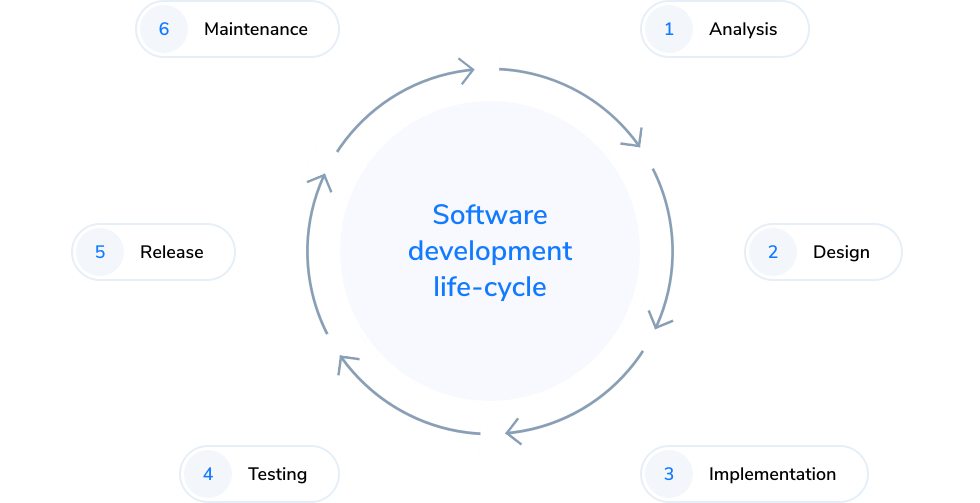Application development life cycle
Application development life cycle

Application development life cycleteam explained
The requirement collection is the first stage in web and mobile application development. It is performed by the senior team of business analysts, technical architects, and project managers together with all the industry’s business stakeholders and domain experts.
- scope definition of the entire project;
- planning for the quality assurance requirements;
- definition of anticipated issues, opportunities;
- recognition of the risks involved;
- timeline definition.
When the requirement analysis phase is done, the next step is to define and document software needs in the ‘Software Requirement Specification’ (‘SRS’) document. It has everything that should be structured and created during the application development life cycle.
There are five main types of feasibilities checks:
- economic;
- legal;
- operation;
- technical;
- schedule.
Based on the SRS document, the team prepares the system and software design to define the IT system architecture. This design phase will be a base for the next coding phase.
There are two types of design documents that are developed:
high-level design (HLD)
- brief description of each module and its functionality;
- dependencies between modules;
- database tables & their main elements;
- architecture diagrams;
- technology details.
low-level design(LLD)
- functional modules logic;
- detailed database tables;
- complete interface detail;
- complete modules input and outputs.
The next phase is coding itself — the most prolonged phase of the software development life cycle.
Peculiarities of the phase:
- Developers should follow some predefined coding guidelines.
- The whole development is divided into tasks for specific modules development.
Once some part of the software coding is complete, it is sent for testing, and the QA team starts testing the functionality to verify that the application works following the requirements.
The process is the following:
- QA team finds some issues;
- QA team sends them to the dev team;
- dev team fixes the issues;
- QA team rechecks the functionality.
Once the software is developed and fully tested, the final deployment process is launched.
QA team checks the software in the production environment.
After the release, the application continues its cycle following 3 possible ways:
- bug fixing;
- software upgrade;
- enhancement with new features.
